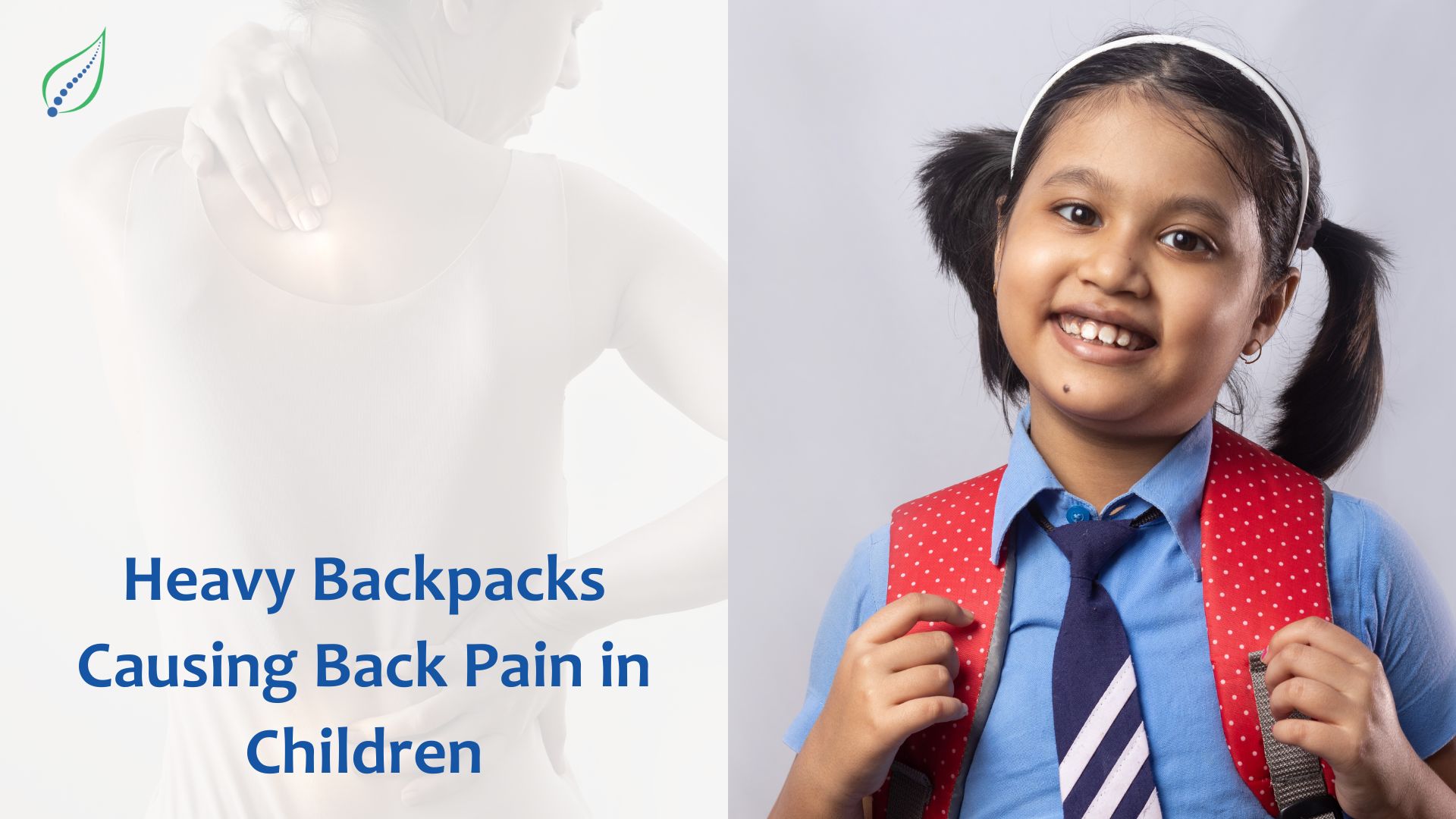Heavy Backpacks Causing Back Pain in Children
It’s back-to-school season. As a parent, you ensure your children have all the right school supplies. You may pick out the coolest backpack without realizing it might be too heavy for your child. Heavy backpacks worn incorrectly can cause children of any age to develop back pain, strain muscles, and even suffer skeletal damage over time. Recognizing, treating, and preventing backpack-related back pain can help keep your child healthy and active.
Causes of Backpack-Related Back Pain
The average child’s backpack should weigh no more than 10-20% of their body weight. Many children carry more than this in school bags or wear backpacks incorrectly, leading to posture changes and fatigue. Back pain can start gradually or suddenly, brought on by:
- Carrying excess weight ‒ Overloading backpacks places strain on muscles/joints
- Improper use ‒ Not using both straps causes one shoulder to bear the burden
- Poor posture ‒ Excess weight causes children to lean forward when walking
- Muscle strain ‒ Weak back/core muscles get overtaxed by heavy loads
- Compressed vertebrae ‒ Heavy bags shift children’s center of gravity backwards
Symptoms of Back Pain
Back discomfort from heavy backpacks can produce:
- Shooting or stabbing pain in the back, neck, shoulders or arms
- Muscle spasms, sprains or strains
- General back soreness made worse from prolonged sitting at school
- Tight hamstrings or hip flexor muscles
- Poor balance or falling due to shifted center of gravity
- Headache at the base of the skull from nerves being compressed
- Numbness/tingling in arms/hands
See a doctor if your child reports persistent back pain for over two weeks or if the pain interferes with normal activity.
Getting a Medical Diagnosis
Physicians start by documenting the location, movements that trigger or lessen pain, injury history, and any underlying medical conditions to assess backpack-related back pain. Bringing your child’s loaded backpack to the clinic helps the doctor assess additional factors, including backpack weight, strap adjustment, and whether it’s worn properly.
Doctors can use several tests to pinpoint causes of back pain, such as:
- Physical examination ‒ Checks range of motion, balance, strength and posture
- Neurological tests ‒ Assess nerve function with reflex and sensation tests
- Imaging tests ‒ X-rays, CT scans or MRIs check for spinal abnormalities
- Erythrocyte sedimentation rate test ‒ High results indicate inflammation present
Once any underlying spinal conditions or nerve damage is ruled out, backpack overload is often the cause of back discomfort in children.
Treating Children’s Back Pain
The main treatments for back pain caused by heavy backpacks focus on load reduction, building muscle strength, improving posture/biomechanics and managing pain or inflammation:
- Lighten backpack weight ‒ Remove unnecessary items
- Distribute weight evenly ‒ Use compartments; pack heavier items closest to the back
- Adjust straps to fit the child’s frame
- Ensure proper wearing position ‒ Use waist and sternum straps for stability
- Stretch tight muscles ‒ Target hamstrings, hips and chest muscles
- Improve posture/gait ‒ Correct standing and walking stance; avoid leaning head forward
- Try over-the-counter pain relief ‒ Acetaminophen, ibuprofen, heat/cold therapy
- See a physical therapist ‒ Help strengthen back muscles, improve flexibility
- Use orthotics ‒ Inserts support arches to improve weight distribution
For chronic pain or nerve compression symptoms, doctors may recommend:
- Prescription medication ‒ Muscle relaxants and anti-inflammatory drugs
- Epidural steroid injection ‒ Treats inflammation affecting nerve roots
Preventing Backpack - Related Back Pain
Parents can help minimize injury risks from overloaded or incorrectly worn backpacks. Follow these tips for backpack safety:
- Weigh packs before school years and monitor weights ‒ Ensure total pack weight stays under 10-20% of your child’s body weight
- Help select an ergonomic backpack design ‒ Focus on padded straps, waist belts and back cushioning
- Pack heaviest items closest to child’s back ‒ Distribute weight evenly across both shoulder straps
- Remind kids always to use both shoulder straps
- Assist adjusting straps to properly fit child’s torso ‒ Bottom of pack should rest evenly across lower back
- Encourage good posture when wearing a backpack ‒ Head up, back straight; don’t lean forward when walking
- Make kids take frequent backpack breaks ‒ Set backpack down while waiting for the bus, during recess, etc.
- Awareness sessions in schools
Instilling healthy backpack habits can reduce injury risks dramatically. Empower children to use common sense about what they carry and how they wear backpacks. Recognizing early warning signs of back pain and seeking both medical care and lifestyle changes provides the best odds of getting back on track quickly.

_1744793045.png)
_1743751136.png)
_1738219992.png)
